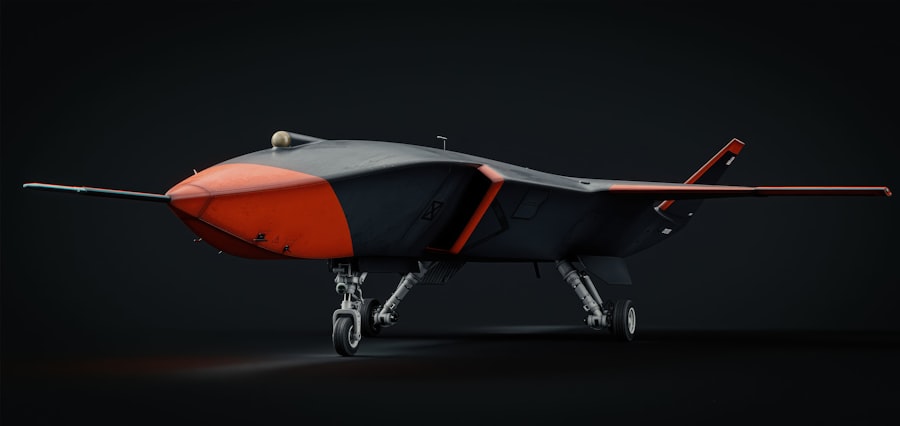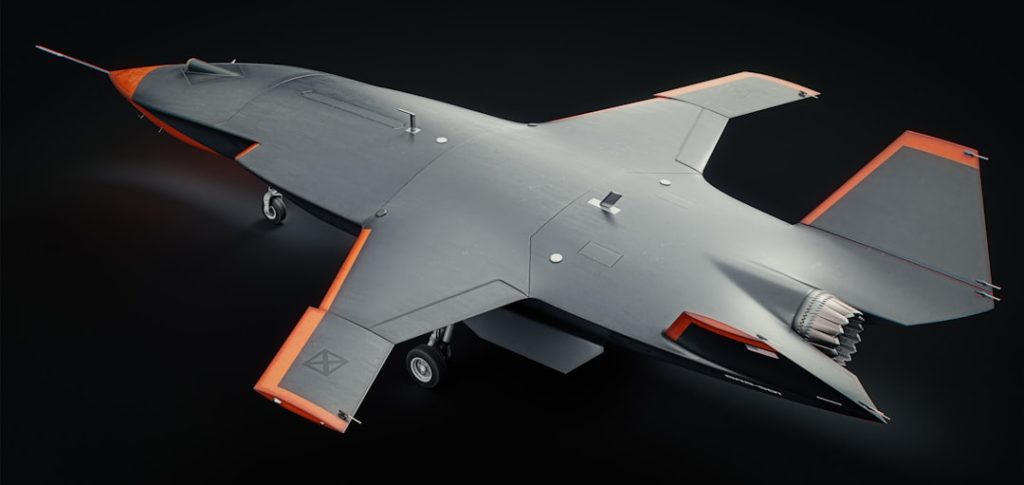Drone aircraft technology has emerged as a transformative force across various sectors, revolutionizing the way we perceive aerial capabilities. Initially conceived for military applications, drones have rapidly evolved into versatile tools that serve a multitude of purposes, from recreational use to complex industrial applications. These unmanned aerial vehicles (UAVs) are equipped with advanced sensors, cameras, and communication systems, enabling them to perform tasks that were once deemed impossible or too dangerous for human operators.
The proliferation of drone technology has not only enhanced operational efficiency but has also opened new avenues for innovation and creativity in fields such as agriculture, logistics, and environmental monitoring. The significance of drone technology extends beyond mere convenience; it represents a paradigm shift in how we approach problem-solving in various domains. With the ability to access hard-to-reach areas and gather real-time data, drones have become indispensable in scenarios ranging from disaster response to wildlife conservation.
As regulatory frameworks evolve and public acceptance grows, the potential applications of drone technology continue to expand, promising a future where UAVs play an integral role in everyday life. This article delves into the evolution of drone technology, its advancements in design and control systems, the integration of artificial intelligence, and its applications across different sectors.
Key Takeaways
- Drone aircraft technology has rapidly evolved and is now being integrated into various commercial and industrial sectors.
- Advancements in drone design and flight control systems have improved their surveillance and reconnaissance capabilities.
- The integration of artificial intelligence has enhanced the capabilities of drone technology, making them more efficient and autonomous.
- Drones are being utilized in various commercial and industrial sectors for tasks such as aerial photography, agriculture, and delivery services.
- Future trends in drone aircraft technology include improved battery life, increased payload capacity, and enhanced safety features.
Evolution of Drone Technology
The journey of drone technology began during World War I when the concept of unmanned aerial vehicles was first explored. Early iterations were rudimentary and primarily used for target practice by military forces. However, it was not until the late 20th century that significant advancements were made, particularly with the advent of GPS technology and miniaturization of electronic components.
The development of the RQ-1 Predator drone in the 1990s marked a pivotal moment in drone evolution, as it showcased the potential for UAVs to conduct surveillance and reconnaissance missions without risking human lives. As technology progressed into the 21st century, drones became increasingly sophisticated. The introduction of commercial off-the-shelf components allowed hobbyists and entrepreneurs to create their own UAVs, leading to a surge in interest and innovation within the field.
The Federal Aviation Administration (FAA) began to establish regulations for commercial drone use in the United States, paving the way for widespread adoption across various industries. This regulatory framework not only ensured safety but also encouraged investment in drone technology, resulting in a flourishing market that now encompasses everything from aerial photography to agricultural monitoring.
Advancements in Drone Aircraft Design

The design of drone aircraft has undergone remarkable transformations over the years, driven by advancements in materials science, aerodynamics, and engineering principles. Modern drones are often constructed from lightweight composite materials that enhance durability while minimizing weight, allowing for longer flight times and greater payload capacities. Innovations such as foldable designs have also emerged, enabling drones to be easily transported and deployed in diverse environments.
Aerodynamic efficiency is another critical aspect of drone design that has seen significant improvements. Engineers have developed more streamlined shapes that reduce drag and enhance stability during flight. Additionally, the integration of multi-rotor configurations has allowed for greater maneuverability and versatility, making drones suitable for a wide range of applications.
For instance, quadcopters have become popular for their ability to hover in place and navigate tight spaces, while fixed-wing drones excel in covering large distances at high speeds. These advancements not only improve performance but also expand the operational capabilities of drones across various sectors.
Innovations in Drone Flight Control Systems
| Drone Flight Control System | Advantages | Challenges |
|---|---|---|
| GPS-based Control | Accurate navigation, autonomous flight | Signal interference, limited indoor use |
| Computer Vision | Obstacle avoidance, precise landing | Complex algorithms, limited range |
| Machine Learning | Adaptive behavior, improved performance | Training data requirements, computational resources |
The flight control systems that govern drone operation have evolved dramatically, incorporating sophisticated algorithms and sensor technologies that enhance stability and responsiveness. Modern drones utilize a combination of inertial measurement units (IMUs), GPS receivers, and barometers to maintain altitude and navigate accurately. These systems allow drones to perform complex maneuvers autonomously while ensuring safety during flight.
One notable innovation in flight control systems is the development of autonomous navigation capabilities. Drones can now utilize computer vision and machine learning algorithms to identify obstacles and make real-time decisions during flight. This level of autonomy not only reduces the burden on human operators but also enhances safety by minimizing the risk of collisions.
For example, drones equipped with obstacle avoidance systems can navigate through dense urban environments or challenging terrains without requiring constant manual control. Such advancements are paving the way for fully autonomous drone operations in various applications, including delivery services and search-and-rescue missions.
Integration of Artificial Intelligence in Drone Technology
Artificial intelligence (AI) has become a game-changer in the realm of drone technology, enabling UAVs to process vast amounts of data and make informed decisions on-the-fly. The integration of AI algorithms allows drones to analyze images captured by onboard cameras, identify patterns, and even recognize specific objects or individuals. This capability is particularly valuable in applications such as surveillance, where drones can autonomously monitor areas for unusual activity or detect changes in landscapes over time.
Machine learning techniques further enhance the functionality of drones by enabling them to learn from past experiences and improve their performance over time. For instance, agricultural drones equipped with AI can analyze crop health by assessing variations in color and texture from aerial imagery. By continuously learning from data collected during flights, these drones can provide farmers with actionable insights that optimize yield and resource management.
The fusion of AI with drone technology not only enhances operational efficiency but also opens new possibilities for innovation across various sectors.
Enhanced Surveillance and Reconnaissance Capabilities

One of the most significant applications of drone technology lies in its enhanced surveillance and reconnaissance capabilities. Drones equipped with high-resolution cameras and advanced sensors can cover vast areas quickly while providing real-time data to operators on the ground. This capability is invaluable for military operations, law enforcement agencies, and disaster response teams that require timely information to make critical decisions.
In military contexts, drones have transformed reconnaissance missions by providing intelligence without putting personnel at risk. The ability to conduct surveillance over hostile territories without detection has given military forces a strategic advantage. Similarly, law enforcement agencies utilize drones for crowd monitoring during events or tracking suspects in urban environments.
The integration of thermal imaging sensors further enhances these capabilities by allowing operators to monitor activities even in low-light conditions. As technology continues to advance, the potential for drones to serve as effective surveillance tools will only increase.
Utilization of Drones in Commercial and Industrial Sectors
The commercial and industrial sectors have embraced drone technology with enthusiasm, recognizing its potential to streamline operations and reduce costs. In agriculture, drones are used for precision farming practices such as crop monitoring, irrigation management, and pesticide application. By providing farmers with detailed aerial imagery and data analytics, drones enable more informed decision-making that can lead to increased productivity and sustainability.
In logistics and delivery services, companies like Amazon and UPS are exploring the use of drones for last-mile delivery solutions. Drones can navigate urban landscapes efficiently, bypassing traffic congestion while delivering packages directly to customers’ doorsteps. This innovation not only enhances customer satisfaction but also reduces operational costs associated with traditional delivery methods.
Furthermore, industries such as construction and infrastructure inspection benefit from drones’ ability to conduct aerial surveys and monitor project progress without disrupting ongoing operations.
Future Trends in Drone Aircraft Technology
As we look toward the future of drone aircraft technology, several trends are poised to shape its trajectory significantly. One prominent trend is the increasing focus on regulatory frameworks that will govern drone operations more comprehensively. As airspace becomes more crowded with UAVs, regulatory bodies will need to establish guidelines that ensure safety while promoting innovation.
This may include developing systems for air traffic management specifically designed for drones. Another trend is the continued integration of advanced technologies such as 5G connectivity and blockchain into drone operations. The implementation of 5G networks will enable faster data transmission between drones and ground control stations, facilitating real-time decision-making and enhancing autonomous capabilities.
Meanwhile, blockchain technology could provide secure data sharing among multiple stakeholders involved in drone operations, ensuring transparency and accountability. Moreover, environmental considerations are likely to drive innovations in drone technology as industries seek sustainable solutions. Electric-powered drones are gaining traction as manufacturers work towards developing longer-lasting batteries that can support extended flight times while minimizing carbon footprints.
As public awareness regarding climate change grows, the demand for eco-friendly drone solutions will likely increase. In summary, the future of drone aircraft technology is bright and filled with possibilities that extend far beyond current applications. As advancements continue to unfold across various domains—ranging from design innovations to AI integration—the impact of drones on society will undoubtedly be profound and far-reaching.


